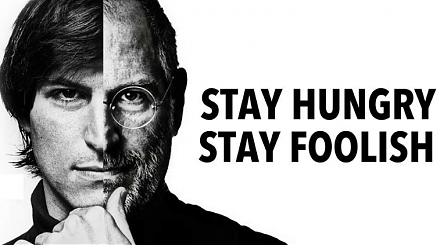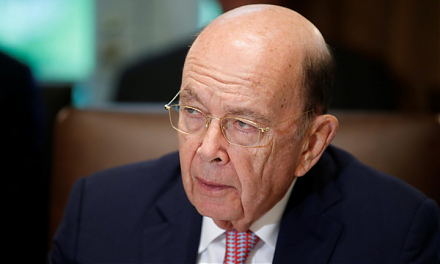

2020-02-26 09:30:00 Wed ET
stock market federal reserve monetary policy treasury interest rate macrofinance investments mergers acquisitions recession stock return s&p 500 fiscal stimulus principles financial crisis financial deregulation bank oligarchy systemic risk asset market stabilization asset price fluctuations goldman sachs

Goldman Sachs follows the timeless business principles and best practices in financial market design and investment management.
William Cohan (2011)
Money and power: how Goldman Sachs came to rule the world
In this book, William Cohan chronicles the corporate story of Goldman Sachs well beyond a century. Cohan focuses on the major contributions of business partners, complex deals, and legal issues. Cohan further details the various Goldman Sachs leaders, internal power struggles, a few skirmishes with the Federal Reserve, and several bouts of economic policy uncertainty and insolvency. Goldman Sachs now establishes its current position as a global investment bank. The fresh and unique Goldman Sachs investment strategy empowers the firm to circumvent economic malaise in the U.S. subprime mortgage turmoil and global financial crisis of 2008-2009. In the new century, Goldman Sachs goes through key changes in corporate culture and leadership for better business conduct and financial innovation.
German immigrant and merchant Marcus Goldman first established the New York City investment firm that would become Goldman Sachs in 1869. In 1882, Marcus Goldman made his son-in-law, Samuel Sachs, his key business partner. The family partnership focused on foreign exchange and then became one of the largest U.S. traders of gold bullion within a few years. From the early stage, the investment firm wished to be regarded as a solid pillar of American capitalism (but not an economic engine of asset market speculation).
In 1913, the second-generation principal partner, Henry Goldman, consulted with President Woodrow Wilson to design the Federal Reserve System. This structural reform built the close affiliation between Goldman Sachs and the Federal Reserve Bank of New York. This close affiliation served as the core foundation of Goldman Sachs dominance in American asset markets. In late-1917, Henry Goldman retired and therefore effectively ended any further participation of the Goldman family in Goldman Sachs. A family friend, Waddill Catchings, who was a key member of the Council for National Defense, a financial author, and a former CEO in Corporate America, joined Goldman Sachs to replace Henry Goldman.
Waddill Catchings helped pull together mergers and acquisitions that established corporate titans such as Kraft Goods and General Goods. He built the investment trust, Goldman Sachs Trading Corporation, in 1928. The investment trust bought large blocks of shares and then resold them at considerable profits to its investors. Due to the stock market crash of 1929, Goldman Sachs and trust shareholders lost hundreds of millions of dollars. The Sachs family decided to oust Catchings and then installed long-time associate Sidney Weinberg as the senior business partner in charge of Goldman Sachs.
Sidney Weinberg inherited 9 seats on American corporate boards of directors and so skillfully leveraged his business connections to create investment opportunities for Goldman Sachs. At one time, Weinberg served on 30+ corporate boards and won the confidence of many CEOs in Corporate America. He earned the accolade *Mr Wall Street* with several political connections to Presidents Franklin Roosevelt and Dwight Eisenhower.
As Weinberg was able to forge fresh friendships throughout the American business community with numerous seats on corporate boards, Goldman Sachs continued to expand its economic power and influence over time. During the Weinberg tenure, Goldman Sachs helped underwrite $300 million bonds for General Electric organic growth as well as the landmark Ford Motor IPO in 1955.
From the 1950s to the 1960s, Gus Lehmann Levy transformed the Goldman Sachs event-driven arbitrage team into one of the most active over-the-counter trading departments on Wall Street; Jay Tenenbaum specialized in trading government and corporate bonds for Goldman Sachs; Robert Rubin leveraged the Goldman Sachs team approach to arbitrage. Although senior partner Sidney Weinberg took the reins at Goldman Sachs, Levy, Tenenbaum, and Rubin specialized in taking big risks for big profits. The trio bought blocks of stocks and then resold them for hefty gains in single transactions.
In 1968, Goldman Sachs helped negotiate the merger of Pennsylvania and New York Central Railroads. In 1970, Penn Central Transportation went bankrupt and thus defaulted on its commercial loans. As a result, numerous investors filed fraud lawsuits against Goldman Sachs. In March 1971, Goldman Sachs decided to limit the liability of its business partners to the total cash that they had invested in the company (rather than their entire net worth). Levy and his team eventually reached a settlement with the Securities and Exchange Commission (SEC), and Goldman Sachs agreed to a new policy of due diligence on future transactions.
After Levy passed away in 1976, John Whitehead and John Weinberg took on new roles as joint senior partners. Whitehead was a World War II veteran who attended Harvard Business School. One of his main contributions was a list of revolutionary business principles for Goldman Sachs:
During his tenure, Whitehead accelerated the global expansion of Goldman Sachs with transformative political connections. Through many mergers and acquisitions, Whitehead and Weinberg collaboratively boosted the capital account balance for Goldman Sachs from about $10 million to $750 million. In 1968, former Treasury Secretary Henry Fowler served as a senior partner and chairman of the Goldman Sachs International Advisory Committee. Whitehead persuaded State Secretary Henry Kissinger to head this committee with regular consultation at least twice per month. Whitehead retired in 1984. In 1985, he became Deputy Secretary of State in the Reagan administration.
Goldman Sachs suffered significant losses in the stock market crash of October 1987. In August 1990, Weinberg announced his retirement and then designated Robert Rubin and Steve Friedman as his co-successors. In 1991, Rubin served as the economic spokesman for the Bill Clinton presidential campaign. When Clinton won his presidential bid, Rubin accepted a White House post as the chairman of the National Economic Council and then left Goldman Sachs. His departure left Steve Friedman in sole charge of the investment bank. In the mid-1990s, Goldman Sachs made $2.7 billion pre-tax profits primarily from trading foreign currencies.
In September 1994, Friedman announced his retirement. At that time, there was an internal power struggle among the senior partners because there was no clear successor. The executive management committee eventually decided that senior partners Jon Corzine and Hank Paulson would become Goldman Sachs CEO and COO respectively.
When Corzine and Paulson took the reins, the investment bank was in a precarious financial position as the partners contributed only about $2 billion equity capital in support of $100 billion total assets under management. In June 1997, almost 75% of Goldman Sachs senior partners voted to proceed on an IPO. However, one of Goldman Sachs major counterparties, Long-Term Capital Management (LTCM), suffered significant losses due to the abrupt devaluation of the Russian ruble with a moratorium on the LTCM repayment of $13.5 billion in U.S. Treasury debt. These unforeseen events forced Goldman Sachs to recall its IPO on the basis of collateral damage from both the LTCM and Russian currency crises.
In March 1999, Goldman Sachs approved a successful IPO. The Corzine-Paulson co-rule had been tumultuous, and so Corzine announced his involuntary retirement. He later became a U.S. senator and governor of New Jersey. Paulson served as the next CEO of Goldman Sachs.
During 1999, Goldman Sachs became a public corporation, and its pre-tax income surged from $2.9 billion to more than $4 billion. In 2000, Goldman Sachs made its largest ever acquisition of Spear, Leeds, and Kellogg LLP and hence became the largest market-maker on the New York and American stock exchanges and further the second largest investment firm on Nasdaq.
From 1998 to 2005, Goldman Sachs traded lots of financial derivatives such as credit default swaps (CDS) and collateralized debt obligations (CDO). Most credit rating agencies such as S&P, Moodys, and Fitch had consistently issued top AAA and Aaa investment grades for key subprime mortgage-driven securities. In Spring 2006, the main credit rating agencies began to shed skeptical light on the subprime mortgage loans. Goldman Sachs decided to offload its mortgage-driven securities toward the end of the same year.
After Paulson consolidated control of Goldman Sachs, he identified Lloyd Blankfein as his heir apparent (even though Blankfein ranked behind 2 co-presidents in the corporate hierarchy). As a Harvard law graduate and former key corporate attorney, Blankfein had been managing the vital Goldman Sachs units that vigorously traded both currencies and commodities. In 2004, Paulson promoted Blankfein to serve as president and chief operating officer (COO). In May 2006, President George W. Bush nominated Paulson to be Treasury Secretary, so Blankfein became the next chairman and chief executive officer (CEO) at Goldman Sachs in July 2006. During his tenure, Blankfein ushered in a new era of explicit client exploitation as Goldman Sachs dominated financial markets worldwide.
By 2007, Goldman Sachs had underwritten $4 billion subprime mortgage securities and CDS deals and $8.4 billion CDOs. In the dramatic episode from June 2007 to September 2008, some firms such as Bear Stearns, American International Group (AIG), and Lehman Brothers began to experience key financial hardship in the U.S. subprime mortgage crisis. Treasury and Federal Reserve had to pour $85 billion taxpayer money into a government bailout to circumvent the negative Wall Street repercussions of financial trouble from Lehman to AIG. Throughout the subprime mortgage turmoil and global financial crisis of 2008-2009, Goldman Sachs betted on the big short with handsome profits amid substantial asset market uncertainty. From Goldman Sachs and JPMorgan Chase to Citigroup and Wells Fargo, most financial institutions recovered healthy profits in the next decade of an economic expansion after the global financial crisis of 2008-2009.
In 2018, David Solomon succeeded Lloyd Blankfein as the new chairman and CEO of Goldman Sachs. Unlike his predecessors, David Solomon had been an asset specialist throughout his professional career. As an investment banker, Solomon served as a major financial product specialist who sold investment-grade corporate bonds. Solomon had prescient insights into global asset market development and the importance of marking-to-market the actual market values (but not fair values) of stocks and bonds etc on the Goldman Sachs balance sheet. Moreover, Solomon appreciated the intrinsic value of sound and efficient financial risk management.
At Goldman Sachs, Solomon supported a comprehensive reformation of corporate culture with better work-life balance. He preached an active interest in keeping the maximum number of employee work hours about 70-to-75 hours per week. Under his leadership, Goldman Sachs raised salaries and bonuses for programmers and technical specialists, modernized computer systems and digital devices, protected intellectual properties (e.g. proprietary software solutions and platforms), instituted new video interviews, and maintained smart-casual dress codes. Solomon inspired many fresh talents to join Goldman Sachs for better financial literacy and inclusion.
Despite legal issues, potential conflicts of interest, and other controversies through its corporate history, Goldman Sachs continues be a world-class investment bank with core business insights and principles.
This analytic essay cannot constitute any form of financial advice, analyst opinion, recommendation, or endorsement. We refrain from engaging in financial advisory services, and we seek to offer our analytic insights into the latest economic trends, stock market topics, investment memes, personal finance tools, and other self-help inspirations. Our proprietary alpha investment algorithmic system helps enrich our AYA fintech network platform as a new social community for stock market investors: https://ayafintech.network.
We share and circulate these informative posts and essays with hyperlinks through our blogs, podcasts, emails, social media channels, and patent specifications. Our goal is to help promote better financial literacy, inclusion, and freedom of the global general public. While we make a conscious effort to optimize our global reach, this optimization retains our current focus on the American stock market.
This free ebook, AYA Analytica, shares new economic insights, investment memes, and stock portfolio strategies through both blog posts and patent specifications on our AYA fintech network platform. AYA fintech network platform is every investor's social toolkit for profitable investment management. We can help empower stock market investors through technology, education, and social integration.
We hope you enjoy the substantive content of this essay! AYA!
Andy Yeh
Chief Financial Architect (CFA) and Financial Risk Manager (FRM)
Brass Ring International Density Enterprise (BRIDE) © 2013-2023
Do you find it difficult to beat the long-term average 11% stock market return?
It took us 20+ years to design a new profitable algorithmic asset investment model and its attendant proprietary software technology with fintech patent protection in 2+ years. AYA fintech network platform serves as everyone's first aid for his or her personal stock investment portfolio. Our proprietary software technology allows each investor to leverage fintech intelligence and information without exorbitant time commitment. Our dynamic conditional alpha analysis boosts the typical win rate from 70% to 90%+.
Our new alpha model empowers members to be a wiser stock market investor with profitable alpha signals! The proprietary quantitative analysis applies the collective wisdom of Warren Buffett, George Soros, Carl Icahn, Mark Cuban, Tony Robbins, and Nobel Laureates in finance such as Robert Engle, Eugene Fama, Lars Hansen, Robert Lucas, Robert Merton, Edward Prescott, Thomas Sargent, William Sharpe, Robert Shiller, and Christopher Sims.
Follow AYA Analytica financial health memo (FHM) podcast channel on YouTube: https://www.youtube.com/channel/UCvntmnacYyCmVyQ-c_qjyyQ
Follow our Brass Ring Facebook to learn more about the latest financial news and fantastic stock investment ideas: http://www.facebook.com/brassring2013.
Free signup for stock signals: https://ayafintech.network
Mission on profitable signals: https://ayafintech.network/mission.php
Model technical descriptions: https://ayafintech.network/model.php
Blog on stock alpha signals: https://ayafintech.network/blog.php
Freemium base pricing plans: https://ayafintech.network/freemium.php
Signup for periodic updates: https://ayafintech.network/signup.php
Login for freemium benefits: https://ayafintech.network/login.php
If any of our AYA Analytica financial health memos (FHM), blog posts, ebooks, newsletters, and notifications etc, or any other form of online content curation, involves potential copyright concerns, please feel free to contact us at service@ayafintech.network so that we can remove relevant content in response to any such request within a reasonable time frame.
2017-03-03 05:39:00 Friday ET

As the biggest IPO since Alibaba in recent years, Snap Inc with its novel instant-messaging app SnapChat achieves $30 billion stock market capitalization.
2019-07-13 07:17:00 Saturday ET

Japanese prime minister Shinzo Abe outlines the main economic priorities for the G20 summit in Osaka, Japan. First, Asian countries need to forge the key Re
2019-08-30 11:35:00 Friday ET

The conventional wisdom suggests that chameleons change their skin coloration to camouflage their presence for survival through Darwinian biological evoluti
2020-03-26 10:31:00 Thursday ET

The unique controversial management style of Steve Jobs helps translate his business acumen into smart product development. Jay Elliot (2012) Leading
2018-08-03 07:33:00 Friday ET

President Trump escalates the current Sino-American trade war by imposing 25% tariffs on $200 billion Chinese imports. These tariffs encompass chemical prod
2018-06-01 07:30:00 Friday ET

The U.S. federal government debt has risen from less than 40% of total GDP about a decade ago to 78% as of May 2018. The Congressional Budget Office predict